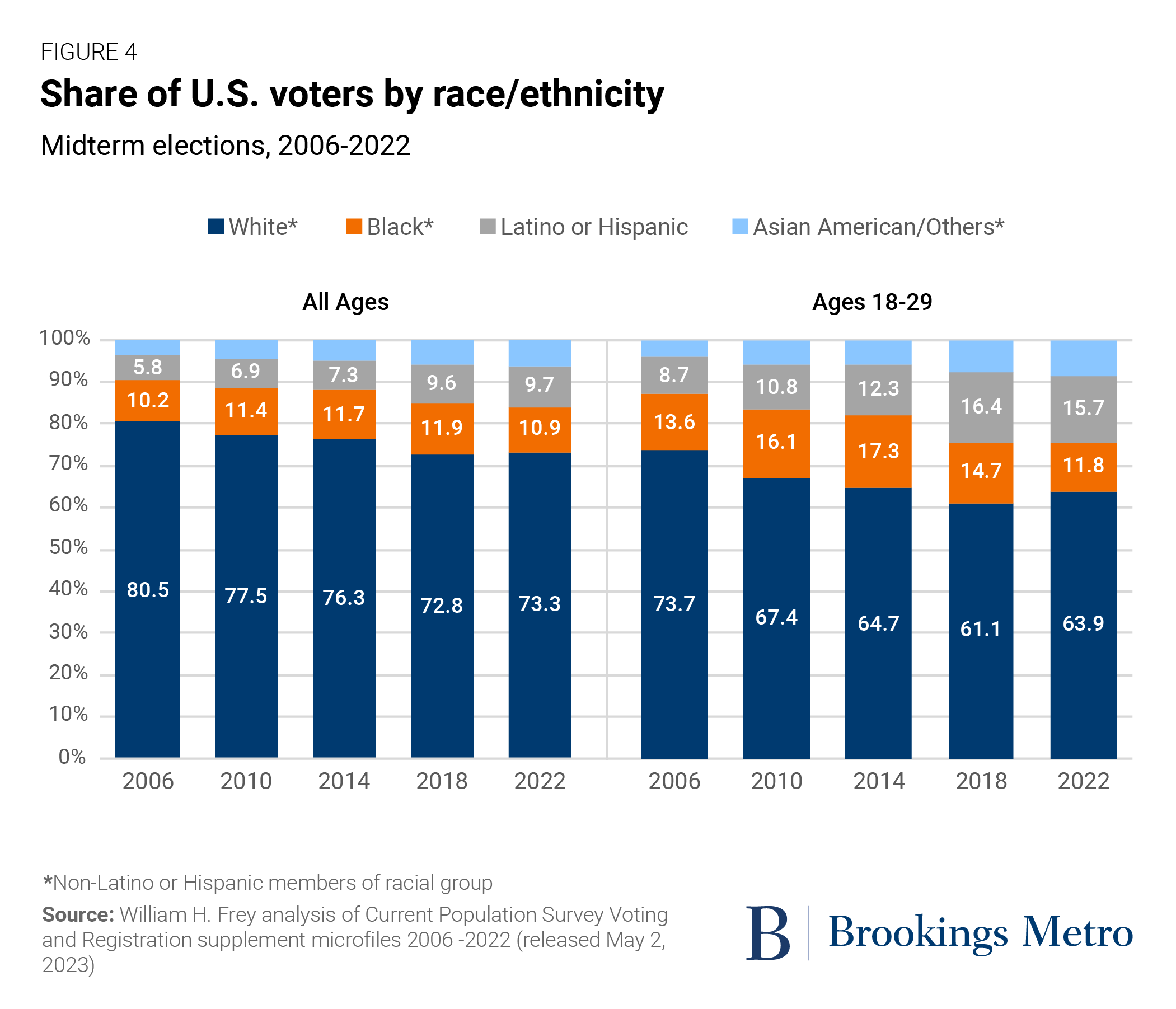Florida And Wisconsin Election Turnout: What It Means For The Future

Table of Contents
Analyzing Florida's Election Turnout
Florida, a key swing state, consistently demonstrates high levels of political engagement. However, the composition of this engagement is constantly evolving.
Demographic Shifts and Voter Participation
Florida's demographics are in flux. The state is experiencing a rapidly aging population alongside a significant influx of new residents from other states and countries. These demographic shifts directly correlate with voter registration and turnout rates.
- Increased registration among younger voters: While still lower than older demographics, there's evidence suggesting a rise in younger voter registration and participation, potentially influenced by increased online voter registration initiatives and targeted campaigns.
- Higher turnout among Hispanic voters compared to previous elections: The growing Hispanic population in Florida is increasingly becoming a significant voting bloc, impacting election outcomes and overall turnout. This increased participation may be attributed to greater community outreach and candidate engagement with this demographic.
- Impact of gerrymandering on voter distribution and participation: Gerrymandering, the practice of manipulating electoral district boundaries, can impact voter distribution and potentially depress turnout in certain areas. Analyzing the effects of gerrymandering on Florida's election turnout requires careful consideration of district-level data. Further research is needed to fully assess its impact.
Impact of Key Political Races and Issues
High-profile races and significant policy debates heavily influence voter engagement in Florida.
- Increased media coverage of key races boosted voter interest: Highly contested races, such as gubernatorial and senatorial elections, often garner significant media attention, increasing public awareness and driving up voter turnout.
- Controversial policy issues motivated higher voter turnout: Debates surrounding healthcare, education, and environmental policy can mobilize voters with strong opinions on either side, resulting in increased participation.
- Effective campaign strategies influenced participation rates: Sophisticated campaign strategies, including targeted advertising and grassroots mobilization efforts, play a significant role in boosting voter engagement and maximizing turnout.
Examining Wisconsin's Election Turnout
Wisconsin, another crucial swing state, presents a different picture of voter participation, shaped by unique factors.
Partisan Polarization and Voter Mobilization
Partisan polarization significantly impacts Wisconsin's election turnout.
- Increased use of targeted advertising on social media: The use of social media for targeted political advertising has become increasingly prevalent, leading to higher engagement among specific demographic and ideological groups.
- Effective grassroots mobilization efforts by both parties: Both the Republican and Democratic parties employ robust grassroots mobilization strategies, including canvassing, phone banking, and volunteer recruitment, to drive voter participation.
- Influence of partisan media on voter perceptions and turnout: The proliferation of partisan news sources and online platforms contributes to heightened polarization, potentially impacting voter perceptions and influencing turnout.
Accessibility Issues and Voter Suppression Concerns
Accessibility of polling places and voter registration processes remains a crucial factor influencing Wisconsin's election turnout.
- Concerns about limited polling locations in certain areas: Concerns exist regarding the availability of polling places, particularly in rural areas or communities with limited transportation access, potentially disenfranchising voters.
- Debate surrounding voter ID laws and their impact: Voter ID laws remain a subject of debate, with concerns raised about their potential to suppress voter turnout among specific demographics. Research on the impact of these laws on participation is ongoing.
- Efforts to improve voter registration accessibility: Efforts are underway to make voter registration more accessible, including online registration and automatic voter registration initiatives. These efforts aim to improve voter participation.
Comparative Analysis and Future Predictions
Comparing Florida and Wisconsin election turnout reveals both commonalities and unique characteristics.
- Similarities in the impact of key political races: Both states demonstrate that high-profile political races significantly influence voter turnout. Competitive races tend to generate greater public interest and higher participation rates.
- Differences in the influence of demographic shifts: While both states experience demographic change, the impact on voter turnout differs. Florida's aging population and influx of new residents present a unique challenge compared to Wisconsin's demographic trends.
- Predictions for future turnout based on current trends: Based on current trends, both states are likely to continue experiencing significant voter turnout. However, factors like increasing partisan polarization and efforts to improve or restrict access to voting will significantly impact future participation.
Conclusion
The analysis of Florida and Wisconsin election turnout reveals complex interactions between demographic shifts, political polarization, and accessibility issues. Understanding these factors is crucial for predicting future participation and ensuring fair and accessible elections. By studying the trends in both states, we can gain valuable insights into the evolving dynamics of voter engagement across the nation. To stay informed about these crucial issues and their impact on the future of American democracy, continue to follow the latest data and analysis on Florida and Wisconsin election turnout.

Featured Posts
-
 Update Rolls Royce Reiterates 2025 Targets Amidst Global Trade Issues
May 03, 2025
Update Rolls Royce Reiterates 2025 Targets Amidst Global Trade Issues
May 03, 2025 -
 Rk I Chekhiya Novye Perspektivy Ekonomicheskogo Sotrudnichestva
May 03, 2025
Rk I Chekhiya Novye Perspektivy Ekonomicheskogo Sotrudnichestva
May 03, 2025 -
 Play Station Portal And Cloud Gaming Accessing A Wider Library Of Classics
May 03, 2025
Play Station Portal And Cloud Gaming Accessing A Wider Library Of Classics
May 03, 2025 -
 Reforming Mental Healthcare Prioritizing Patient Well Being
May 03, 2025
Reforming Mental Healthcare Prioritizing Patient Well Being
May 03, 2025 -
 Reactions Des Partis Politiques Algeriens Pt Ffs Rcd Jil Jadid A La Nouvelle Loi
May 03, 2025
Reactions Des Partis Politiques Algeriens Pt Ffs Rcd Jil Jadid A La Nouvelle Loi
May 03, 2025
